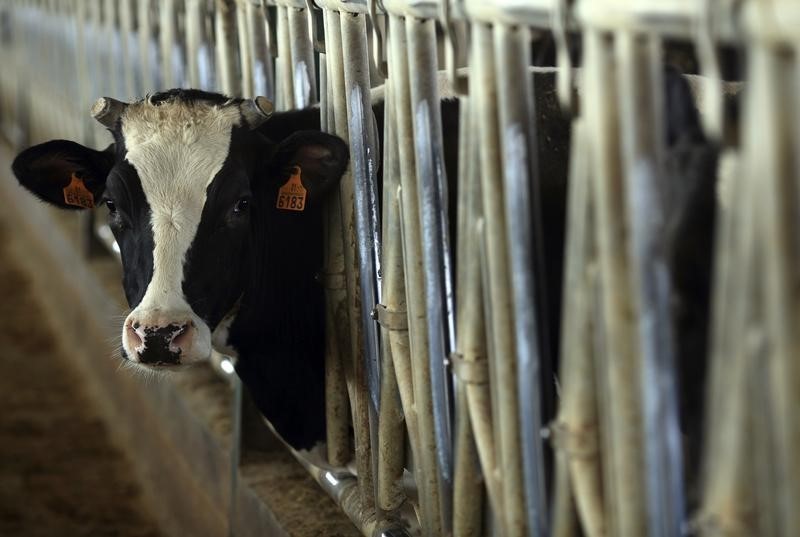By Julie Steenhuysen
CHICAGO (Reuters) – Texas dairy farmer infected with H5N1 bird flu was not wearing respiratory or eye protection and was exposed to cattle that appeared to have the same symptoms as those from a nearby farm with a confirmed outbreak of the virus, new details said about the case that were released Friday.
The details, reported online in the New England Journal of Medicine, underscore the risk to farmworkers in the ongoing outbreak among U.S. dairy cattle and the need to wear protective gear to prevent infection.
So far, the outbreak – the first in cattle – is known to have infected 36 dairy herds in nine states.
Infection by the avian virus is rare in humans, and the dairy worker’s case, first reported in March, represents only the second known human infection in the United States.
It follows worrying spread of the virus among a variety of mammal species, raising concerns that widespread human exposure could cause the virus to spread more easily through the population and cause a global pandemic.
The U.S. Centers for Disease Control and Prevention (CDC) said in the report that the farmworker developed a serious infection in his right eye, known as conjunctivitis, or pink eye, but showed no signs of respiratory infection or fever.
The worker had not reported any contact with sick or dead birds or other animals, but did have close exposure to sick dairy cows, with symptoms including decreased milk production, loss of appetite and lethargy.
Remove ads
.
The worker was wearing gloves, but no respiratory or eye protection.
The CDC urges farmers, workers and first responders to wear appropriate protective equipment when coming into direct or close physical contact with sick birds, livestock, feces, raw milk or contaminated surfaces.
An analysis of the outbreak released Thursday by the U.S. Department of Agriculture shows that the virus had been circulating among U.S. dairy cows for about four months before being reported on March 25.
Preliminary tests of milk, baby food and other dairy products indicate they are safe to consume, the FDA said.





















